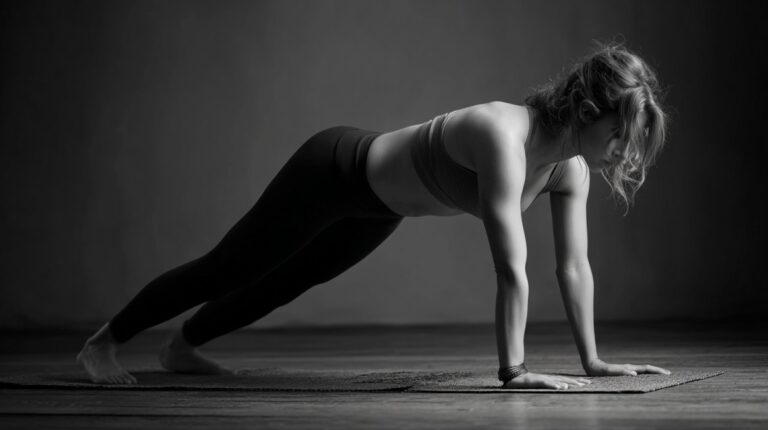Hips often carry both physical and emotional burdens. Hours of sitting at a desk, holding in past traumas, or resisting stress can cause stiffness that goes far beyond muscle tightness.
When energy is blocked in the hips, it may lead to poor posture, discomfort, or even emotional heaviness. Hip-opening yoga poses offer more than just a stretch.
They create space, improve flexibility, release tension, and encourage clarity in body and mind.
Practicing them with patience can unlock hidden layers of release, offering a sense of grounding and emotional balance.
1. Pigeon Pose (Eka Pada Rajakapotasana)
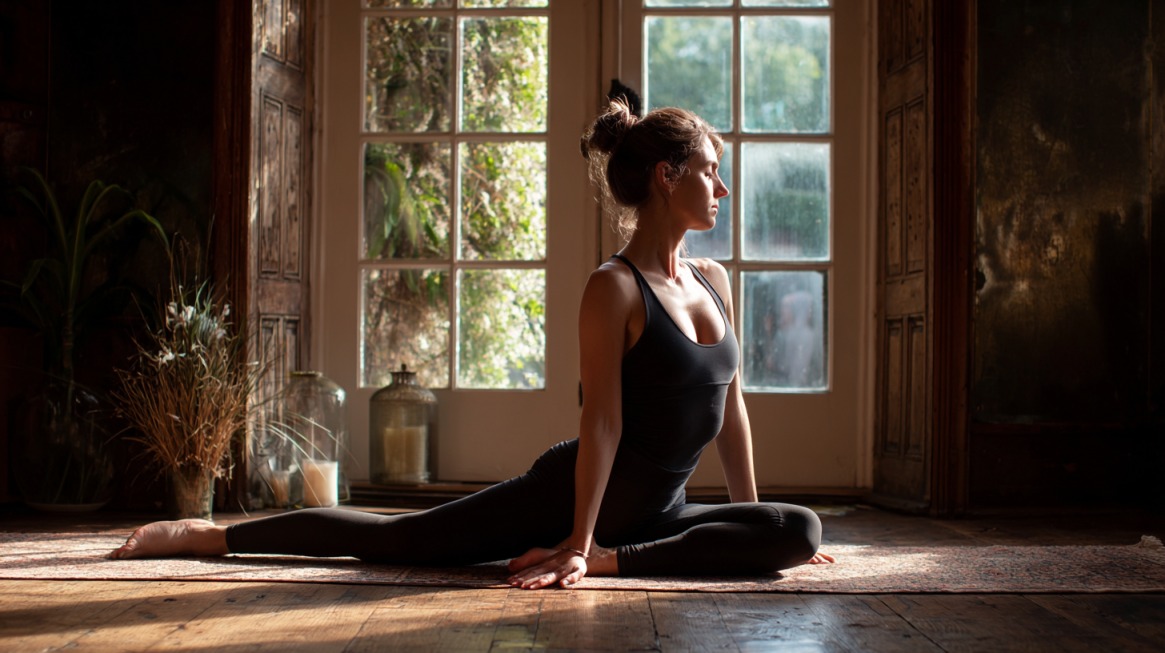
Settling into Pigeon Pose creates a powerful stretch across the glutes and psoas. One leg extends back while the other folds forward, pressing the hip gently toward the mat.
Gravity assists in releasing tight muscles as the body naturally begins to soften.
Breath awareness is crucial, as each exhale encourages greater surrender into the posture.
Physical, emotional, and energetic effects combine to make Pigeon Pose transformative. Many practitioners report that emotions such as sadness or grief surface during the hold. It is often called a grounding posture because of its stillness and the way it quiets the nervous system.
A long hold is recommended to allow for deeper muscular release and emotional clarity.
- Muscle focus: Glutes, hip flexors, psoas.
- Emotional effect: Encourages release of grief or sadness.
- Energetic insight: Brings grounding and stability.
- Best practice: Hold for at least 30–60 seconds per side with steady breath.
Consistency with Pigeon Pose helps not only with hip flexibility but also with creating a safe space for emotional healing. Many find it to be an anchor during periods of stress or emotional turmoil.
2. Lizard Pose (Utthan Pristhasana)
Lizard Pose is an intense forward-leaning stretch that targets hip flexors, groin, and hamstrings. Beginning in a low lunge, hands or forearms lower to the mat while the front foot edges outward. With time and patience, hips gain both flexibility and resilience.
Practicing regularly can help relieve stiffness caused by long hours of sitting or repetitive movement.
On an energetic level, Lizard Pose opens a channel for vulnerability. By lowering closer to the floor, the posture invites surrender and reduces mental resistance.
It is often used as a bridge posture in sequences because it transitions easily into other hip openers.
- Primary stretch: Hip flexors, groin, hamstrings.
- Secondary benefit: Improves lower-body circulation.
- Emotional aspect: Encourages surrender and vulnerability.
- Practical tip: Keep the back knee padded for comfort.
Holding Lizard Pose for several breaths teaches patience and focus. The intensity might feel challenging, but with proper alignment and mindful breathing, the posture creates balance between strength and surrender.
3. Butterfly Pose (Baddha Konasana)
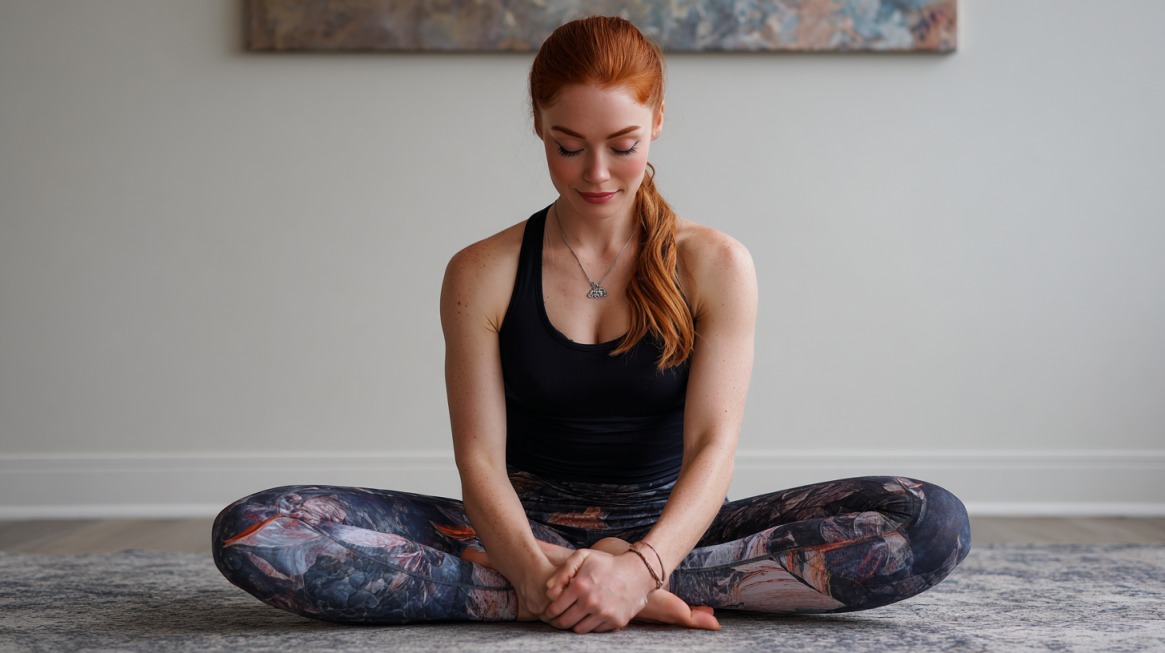
Butterfly Pose provides a gentle stretch to the inner thighs and pelvic floor. Sitting with the soles of the feet together and knees spread outward, the spine remains tall while gravity naturally draws the legs down.
It is approachable for beginners, while also being a meditative posture for advanced practitioners.
Relaxation deepens as the parasympathetic nervous system activates. Breathing steadily while holding Butterfly Pose lowers stress and promotes calm. Its restorative quality makes it a safe choice before or after more demanding postures.
- Muscles targeted: Inner thighs, hips, pelvic floor.
- Emotional effect: Promotes inner quiet and calm.
- Energetic connection: Opens space for relaxation and meditation.
- Suitability: Safe for all levels.
Butterfly Pose becomes especially powerful when held for longer periods, allowing the hips to soften gradually. Many yogis use it at the beginning or end of practice to ground themselves and prepare for meditation.
4. Happy Baby (Ananda Balasana)
View this post on Instagram
Happy Baby combines a hip opener with spinal release. Lying on the back, knees bend toward the armpits while the feet are held with the hands.
Gravity gently presses the hips open as the lower back flattens against the mat. Adding gentle rocking side to side provides a soothing massage for the spine.
Emotionally, the posture often brings playfulness. It can release tension stored in the hips while connecting practitioners to a sense of innocence.
Happy Baby is particularly beneficial for those experiencing lower back discomfort or stiffness.
- Muscles stretched: Hips, groin, lower spine.
- Additional benefit: Soothes the nervous system.
- Emotional connection: Promotes joy and childlike ease.
- Optional variation: Gentle rocking for massage effect.
Happy Baby encourages a lighthearted approach to practice. Instead of striving, it invites release, making it an excellent posture for unwinding physically and emotionally.
5. Garland Pose (Malasana)
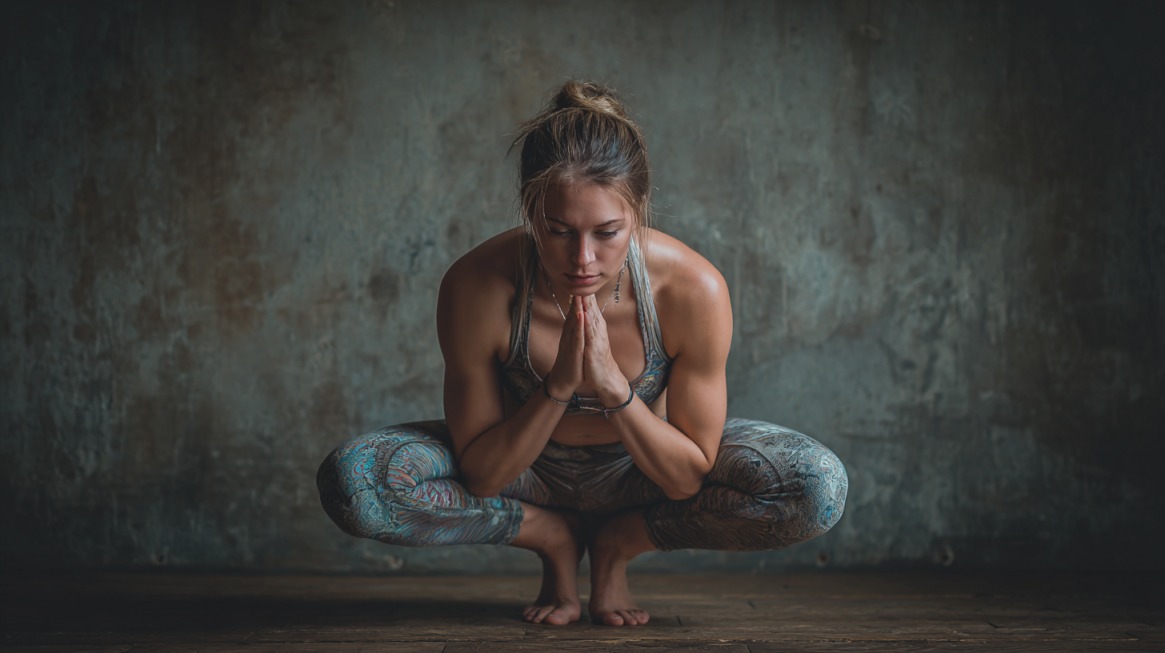
Garland Pose is a squat that builds hip mobility and digestive support. Feet spread slightly wider than shoulder width, knees bend deeply, and palms press together at the chest.
The posture elongates the spine while opening the hips, ankles, and groin.
Energetically, Malasana is strongly tied to the root chakra, symbolizing security and grounding. It can stir resistance, both physically and mentally, but working through that discomfort builds patience and discipline.
Practicing regularly leads to improved flexibility and stability.
- Target areas: Hips, groin, ankles.
- Physical benefit: Enhances mobility and balance.
- Emotional insight: Encourages grounding and patience.
- Alignment tip: Keep heels rooted for stability.
Garland Pose offers not just mobility, but also a sense of connection to the earth. It can be a humbling posture that reveals limitations while also cultivating growth.
6. Low Lunge (Anjaneyasana)
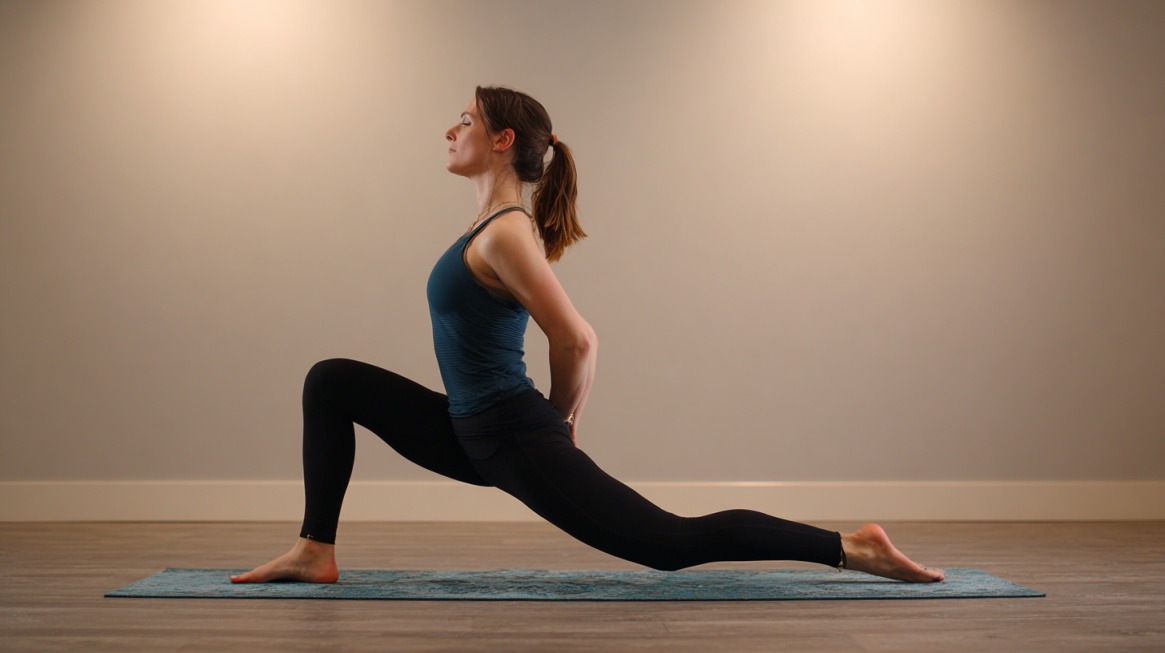
Low Lunge creates an expansive opening through the hip flexors and chest. One foot steps forward while the back knee lowers, and the torso lifts upward.
Arms reach overhead, creating length and openness in the front body. This posture is both strengthening and restorative, depending on variations.
It brings a sense of courage and emotional expansion. By lifting through the chest, the Low Lunge connects with heart-opening energy, making it both powerful and uplifting.
Variations such as adding a backbend or arm extensions intensify the experience.
- Muscles involved: Hip flexors, quadriceps, spine.
- Energetic quality: Encourages courage and openness.
- Common variation: Adding a twist or backbend.
- Alignment tip: Keep the front knee aligned above the ankle.
Low Lunge provides an opportunity to combine strength with surrender, giving balance to body and mind in one posture.
7. Figure Four Pose (Reclining or Seated)
@knowyogawithjess 5 different ways to do figure 4 pose! ▪️Seated ▪️reclined ▪️in downward dog ▪️standing ▪️on a chair Which your favourite variation? #yogapose #yoga #yogaflow #figure4 #hipstretch ♬ Secret Getaway – Eazy & Slip.stream
Figure Four offers targeted relief for the outer hips and glutes. Reclining or seated, one ankle crosses over the opposite thigh while the supporting leg draws closer.
The posture is highly accessible and suitable for most practitioners, making it a favorite for easing hip tightness.
Athletes benefit greatly, as it helps release tension caused by running or cycling. Breathing deeply during the hold enhances relaxation and softens tight muscles.
- Focus area: Outer hips and glutes.
- Practical use: Relieves tension from athletic activity.
- Emotional aspect: Supports release of built-up stress.
- Suitability: Accessible for all levels.
Figure Four creates a balanced combination of physical stretch and emotional relaxation, making it a versatile and restorative posture.
8. Frog Pose
Frog Pose provides one of the most intense hip and inner-thigh stretches in yoga. Starting on all fours, legs slide outward while the hips sink down. The posture requires patience and often benefits from support with blankets or blocks.
Emotionally, Frog Pose can be powerful. It is not uncommon for practitioners to feel emotional release during the hold, as tension from the pelvis gradually dissolves. Because of its intensity, warming up beforehand is essential.
- Primary stretch: Inner thighs, groin, pelvis.
- Emotional release: Helps process stored feelings.
- Support tip: Use props for comfort.
- Best practice: Hold briefly at first, then gradually increase time.
Frog Pose is recommended for those who are ready to challenge themselves both physically and emotionally. It provides a strong opportunity for release when practiced mindfully.
9. Goddess Pose
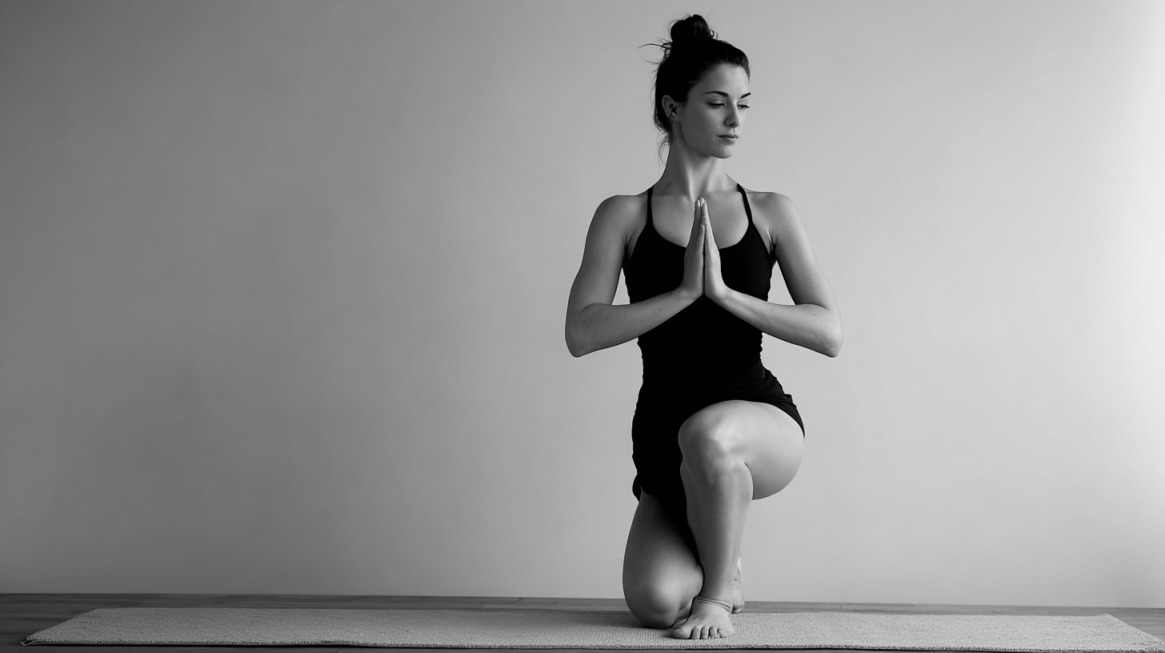
Goddess Pose balances strength and openness. With legs wide, knees bent deeply, and arms extended, the posture requires full-body engagement. It builds endurance while simultaneously stretching hips, groin, and thighs.
The Goddess Pose carries symbolic meaning. It connects with empowerment, grounding, and resilience. Proper alignment stabilizes the joints, protecting knees and ankles during the hold.
- Muscles engaged: Hips, thighs, glutes, core.
- Energetic effect: Connects with feminine power and strength.
- Alignment focus: Keep knees aligned with toes.
- Practice tip: Breathe steadily to maintain endurance.
Goddess Pose is both challenging and empowering, helping practitioners cultivate discipline while opening the hips in a powerful way.
10. Reclined Bound Angle (Supta Baddha Konasana)
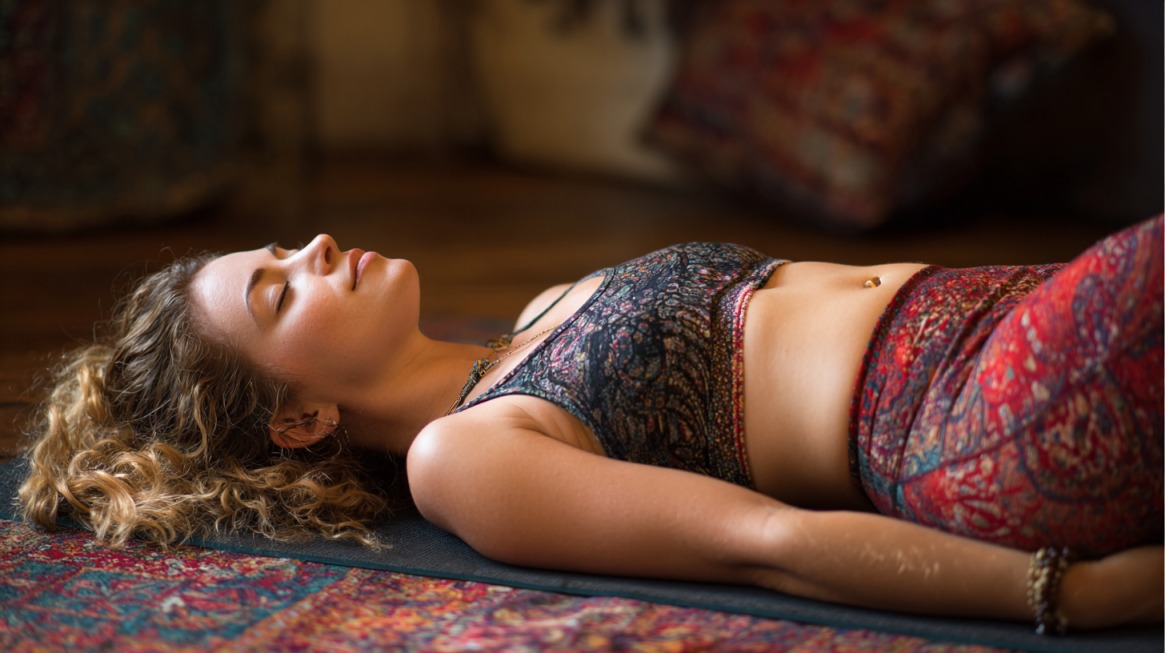
Reclined Bound Angle provides a passive and restorative hip opening.
Lying on the back with feet together and knees falling outward, the posture allows gravity to naturally open the hips.
Props such as bolsters or blankets can add support, making the pose deeply restorative.
It is especially beneficial for calming the nervous system. Ideal for meditation, breathwork, or final relaxation, Reclined Bound Angle allows the body to release without effort.
- Primary stretch: Hips, inner thighs, chest.
- Emotional quality: Promotes rest and inner peace.
- Energetic insight: Supports relaxation and heart opening.
- Best use: Combine with pranayama or meditation.
Reclined Bound Angle encourages surrender, inviting the practitioner into stillness. Regular practice helps dissolve stress while fostering clarity and balance.
The Bottom Line
Hip-opening yoga poses provide more than just physical benefits. By practicing regularly, flexibility improves, posture realigns, and emotions find healthier pathways for release.
Each posture becomes a tool for healing, encouraging both resilience and ease.
With patience and mindful breathing, the process of releasing tension in the hips transforms body and mind, creating balance that extends into daily life.

